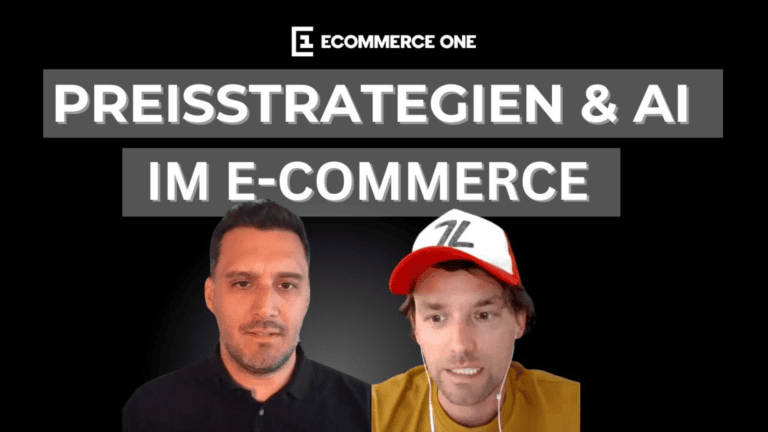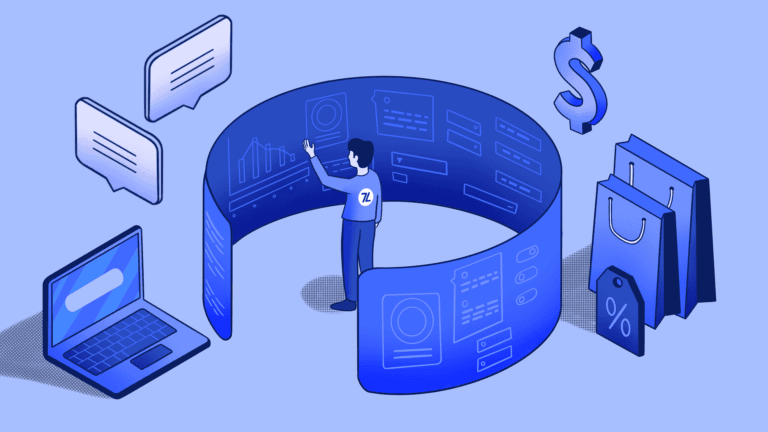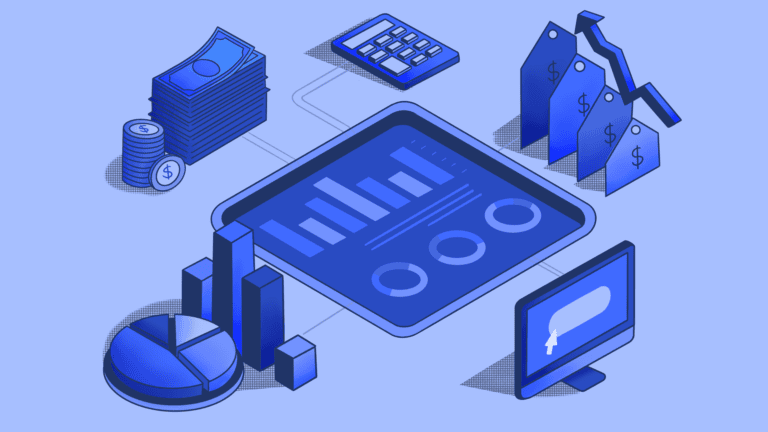Updated July 2024
Traditional price optimization and its limitations
Optimizing prices in a manner which both maximizes profits and avoids discouraging customers from purchasing has always been a challenge for retailers. To manage price optimization, retailers have typically used traditional, rule-based methods. These methods involve the manual analysis of customer and market data, whereby pricing managers then use simple mathematical models (such as linear regression) to calculate how price changes will affect both profit margins as well as customer willingness to pay.
Based on this analysis, they define price rules that determine the price setting logic. These pricing rules are then stored in price optimization tools, and are used as the basis on which prices are automatically adjusted. They must be regularly checked and monitored (e.g. with AB testing) to make sure that they are aligned with current market conditions, and that they are performing to an optimal degree. This process costs companies a lot of time and effort to manage effectively. Even worse, many companies do not have a good monitoring process in place.
These traditional price optimization methods have been further impacted by the e-commerce explosion and overall digitization of the market in recent years. This has led to a massive increase in the amount of consumer and sales-related data that retailers must contend with. The sheer volume of data now available makes it increasingly challenging for retailers to evaluate it correctly and continuously.
Overall, the market conditions in which companies are currently competing are becoming increasingly complex. As a result, traditional price optimization methods can no longer adequately aid retailers in setting prices. However, there are new advances in price optimization technology that allow retailers to harness the full potential of their data, while easily and effectively setting prices which maximize their profits. The key to this technology is machine learning.
What is machine learning-based pricing?
Machine learning technology is proving to be a major game changer in the realm of price optimization, as it is able to address many of the challenges that retailers currently face. For one, machine learning based algorithms are able to analyze much larger data sets and take into account significantly more variables than is possible with traditional pricing. Before, pricing managers would have to manually determine pricing rules. Machine learning models, in contrast, use algorithms that continuously learn from their results in a semi-automated way. Retailers are thereby able to use machine learning models to set prices against different targets, such as profit, revenue, or sales. They are able to do this fully automatically, much more precisely, and at a fraction of the effort.
Machine learning based pricing tools are not only designed to learn, but over time they get better at finding the optimal price points for retailers, as they’re able to discover the sweet spot between “too cheap” and “too expensive.” Additionally, these machine learning based pricing tools can consider both critical internal data as well as influential external data in their algorithms. This, combined with the fact that they can process much larger and more diverse datasets than older technologies, gives a high degree of precision to the prices they set in relation to these influential data points. Factors that these algorithms evaluate include:
- Historical sales and transaction data
- Competitor prices
- Seasonal changes
- Weather conditions
- Inventory levels
- Product features
- Marketing campaigns
Using this data, machine learning-based pricing applications can calculate price elasticity, measuring how demand will fluctuate as a result of changes in conditions. The software then adjusts prices accordingly. These tools can also determine which products are fairly stable in their demand – making them suitable for margin optimization – or those which play a critical role in overall sales, and therefore should only be adjusted cautiously.
Machine learning-based pricing is becoming mainstream in retail. According to an IBM study, 73 percent of companies surveyed plan to optimize their pricing and promotions through smart automation before the end of 2021. To remain competitive, it is imperative for retailers to consider transitioning their pricing methods to machine learning-based technology.
How does machine learning based pricing work?
How, exactly, does machine learning-based pricing work? While it may seem obscure to some, in reality the steps to setting up a successful machine learning-based price optimization software are fairly straightforward. The process is as follows:
Data collection and data cleansing
To develop a machine learning model, different types of data are needed. In the context of price optimization, the database might look like this:
Transactional data:
- List of products sold at different prices
- Product descriptions: Data on each cataloged product (category, brand, size, color, etc.)
Cost data:
- Sourcing cost
- Shipping cost
- Cost of returns
- Marketing cost
Competitor data:
- Competitor prices for comparable products.
Inventory and delivery data:
- Data on inventory levels
- Product availabilities
Price history
Not all of this information is necessary, nor will it be available for every industry or business. For example, many retailers do not have a ‘clean’ price history. However, machine learning based pricing is able to extract a maximum of insights from the available data. This leads in most cases to a significant improvement of the status quo (e.g. higher profit). In addition, companies are rightly very cautious about using personal data. The good news is that for a price optimization on the product level, no personal data needs to be processed.
The collected data must then be cleaned of errors and prepared for further processing. This step is challenging because data of different formats from different sources must be merged. The task should therefore be performed by experienced data scientists who ensure that the data is correctly and completely transformed into an algorithm.
Training of the Machine Learning Model
The next step is to train the machine learning model. First, the model analyzes all of the variables and determines the possible effects of price changes on sales. In doing so, the machine learning model independently detects correlations and patterns that human analysts easily overlook. These are incorporated into the algorithm for calculating optimal prices and form the basis for forecasts of sales and profits.
Once built, the initial model undergoes a practice test, and can also be manually optimized on a regular basis. With each correction, the algorithm learns and also improves its results independently. Additional data sets can be added to further optimize the accuracy of the algorithm. Over time, the training effort decreases while the effectiveness of the software continuously increases.
Optimization based on price elasticity predictions
Once it has been developed, a machine learning model can define the optimal prices which meet specific business objectives and determine the price elasticity for thousands of products, all within minutes.
Internal marketing and product teams can use these calculations to experiment more boldly with entry-level prices and discounts, because they can better assess the potential impact on sales and demand. Instead of relying on gut instinct and experience, they can now reason based on results from the machine learning algorithm. This gives them room to maneuver, which usually translates into increased sales and profits.
What problems can be solved with machine learning based price optimization?
Retailers are increasingly adopting machine learning and AI-enabled technologies to help them gain a competitive edge, and for good reason. Pricing, in particular, is one realm in which machine learning-based methods are proving particularly advantageous and impactful.
E-commerce companies in particular have adopted and benefitted from machine learning-based pricing, though it’s difficult to quantify the adoption rate with certainty. However, according to a study by Lucidworks, 92% of retail businesses plan to ramp up their investments in generative AI – presumably also in price optimization.
There are many known retailers who are already harnessing the power of machine learning. These include well-known brands such as fashion retailer Bonprix, U.S. electronics company Monoprice and British supermarket chain Morrisons.
Some other international brands which are known to use machine learning-based pricing include:
- Zara: The fashion company determines its entry-level prices via AI, and lets prices react to trends in an automated way. As a result, Zara only has to sell 15 to 20 percent of its products at discounted prices, according to Ghemawat and Nueno, as opposed to 30 to 40 percent at other European retailers.
- Ralph Lauren: Ralph Lauren – and Michael Kors – are using machine learning to sell fewer garments via markdown prices, manage inventory more efficiently and increase sales.
- Boohoo, Shein: Fast fashion retailers are known to use machine learning to achieve their business goals despite low entry prices.
For concrete statistics and success stories due to machine learning-based pricing, read our Case Studies.
What are the benefits of machine learning based price optimization?
As described above, traditional price optimization comes with limitations, based on the rule-based approach by which it functions. These pricing rules are rigid and take into account only a fraction of the price-relevant factors, which as a result cause companies to systematically lose profits.
With machine learning, these core limitations and inaccuracies can be overcome, allowing retailers to tap into the full potential of their data and maximize their profits. Some of the areas of advantage for machine learning based methods are:
Analysis of huge and complex data sets
Traditional price optimization works on the basis of simple mathematical formulas that are no longer appropriate for today’s complex market environments, and the massive quantities of data that are generated by consumers today. The results from such methods are also bound by the quality of the price adjustment rules and the pricing manager in charge of them.
With traditional price optimization, basic human error can cause critical developments to be overlooked, or significant variables to be misjudged. This all leads to price optimizations that fall short of their potential.
With machine learning based pricing, however, machine learning models are trained to recognize even non-obvious correlations. They are also uniquely able to manage the huge quantities of internal and external data which can influence pricing decisions, well beyond what any human could possibly manage.
Improved pricing in diversified assortments
Retailers typically manage large assortments, with products across several different categories. Traditional price optimization tools cannot control pricing adjustments finely enough, which means that automatic changes based on pricing rules can negatively affect the sales of individual products. That, or price automation requires costly manual adjustments to review and maintain on a product or category level.
In contrast, machine-learning based price optimization tools are able to control prices down to an individual product level, and trigger changes which are not merely assortment or category-wide.
No more price reductions at the expense of profit
Price reductions, such as discounts or coupons, are a way that retailers increase sales and clear their warehouses of older products. However, if a blanket discount is applied, for example a 30% discount across the entire assortment, a retailer might be selling many products which could have been sold at a significantly lower discount – thereby wasting profit.
Traditional pricing methods work in this “bulldozing” manner, while in comparison machine-learning based pricing is able to be much more precise and therefore more beneficial to retailers.
Avoidance of loss of revenue due to traditional pricing
Traditional pricing is generally not sensitive enough to accurately evaluate the influence of various factors that can affect sales – including things like season, weather, and other factors that influence consumer behavior. If mistakes are made in the setting of pricing rules in the traditional approach – e.g. if certain factors are evaluated too strongly, or too weakly – this can lead to improper price setting and ultimately the loss of sales.
Due to this, price rules often do not work aggressively enough for highly price-sensitive products. And due to their static nature, price rules are also unable to deviate to protect margins on specific products. Machine learning based pricing methods, in comparison, work based on business goals. By training and learning on past and current data, they are able to “know” how price changes will influence key business metrics, and can adjust accordingly.
Improved calculation of willingness to buy
Being able to correctly assess consumers’ willingness to buy is critical for a good pricing strategy. Traditional pricing tools are not able to make reliable predictions for this. Machine learning-based price optimization can accurately infer how price elasticity will evolve from big data variables, and thereby works to maximize profits.
Consideration of a wider range of influential factors
The price elasticity of a product is affected by many factors that are not static. This is a weakness of traditional optimization tools: The database and pricing rules must be manually adjusted on a regular basis to reflect current market and competitive developments. Changes in corporate strategy must also be manually incorporated into price optimization. Machine learning-based pricing works much more autonomously and continuously learns from new data.
Addressing challenges in machine learning-based pricing
Data security
With the increasing use of machine learning and big data, ensuring data privacy and security has become a critical concern. Retailers must comply with regulations such as GDPR and CCPA to protect customer data. Implementing robust security measures and data anonymization techniques can help address these challenges.
Ethical considerations
Ethical considerations in machine learning-based pricing include avoiding discriminatory pricing practices and ensuring fairness. Retailers must ensure that their pricing algorithms do not inadvertently discriminate against certain customer groups. Transparency in pricing strategies and regular audits of algorithms can help maintain ethical standards.
Success stories in machine learning-based pricing
Amazon's dynamic pricing model
Amazon is a prime example of a retailer that has successfully implemented machine learning-based dynamic pricing. The company uses sophisticated algorithms to adjust prices on millions of products multiple times a day. This approach has helped Amazon maintain its competitive edge and maximize profits.
Walmart's price optimization
Walmart has also adopted machine learning for price optimization. By analyzing vast amounts of data, Walmart can predict customer demand and adjust prices accordingly. This strategy has enabled the retail giant to remain competitive and improve its profit margins
The newest generation of machine learning-based price optimization: predictive pricing

7Learnings takes its machine learning-based price optimization solution one step further. We use price elasticity and forecasting algorithms to predict the effect of price changes on KPIs defined by the business. Managers can control prices for the entire assortment intuitively and based on targets. We call this approach predictive pricing.
As in machine learning-based pricing, price optimization with predictive pricing can be differentiated down to the product level. Even products in the long tail category that are in low demand, or those in the low-price segment can be optimized, since no manual effort is required for monitoring. The benefit of predictive pricing is that prices are optimized in advance.
For example, if a product runs out of stock, the application registers this at an early stage and can raise the price before a supply bottleneck occurs. If product inventories have to be reduced because new goods will soon be delivered, the predictive pricing software also takes corrective action to ensure that the defined KPIs continue to be achieved.
In addition to higher-level targets, companies can also select targets for individual categories or products. For example, should a product achieve a certain sell-through rate? The AI application detects deviations from set sales targets earlier than conventional machine learning applications and controls prices so that the product realizes its full profit potential.
With predictive pricing, online retailers benefit from all the advantages of machine learning, supplemented by the advantages of accurate forecasts. This is because the applications not only evaluate current data, but also anticipate its development, so that price adjustments are made earlier than with other available methods. Whereas such future scenarios and their effects previously had to be simulated manually, the management effort of doing so is now reduced, while the quality of the price optimization increases.
However, users do not have to rely blindly on the algorithm’s price recommendations, as they retain control at all times. Managers can vary their stored corporate targets and simulate how resulting price adjustments will affect all relevant KPIs. Completely manual price optimizations also remain possible. The results of predictive pricing speak for themselves. With profit increases of more than 10 percent, AI-based pricing is well on its way to establishing itself as the gold standard in e-commerce and omnichannel retail.
How 7Learnings’ predictive pricing approach can help you optimize your prices
Machine learning is a new technology, but it is rapidly establishing itself in the enterprise world. Price optimization is one use case where machine learning has already proven its worth. After the global players, smaller retailers are now following suit and introducing machine learning-based price optimization. This is because in the increasingly complex and fast-paced market conditions, manual pricing is reaching its limits. Previous mathematical models are too simplistic, and human intervention makes predictions prone to error.
Companies that forgo the support of machine learning in price optimization will feel competitive disadvantages in the foreseeable future. This is because the new technology works much more reliably and significantly faster.
Why is it worth investing in smart price optimization tools? The applications are an easy way to increase sales and profits without having to question fundamental pillars of strategy and offering. They deliver maximum results with minimum investment. Meanwhile, it is no longer necessary to develop machine learning models from scratch. Modern tools like 7Learnings’ pricing solution make it affordable for any company to get started with machine learning-based pricing.



